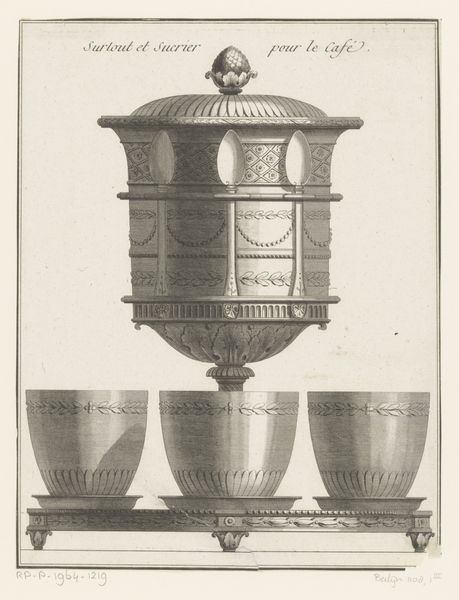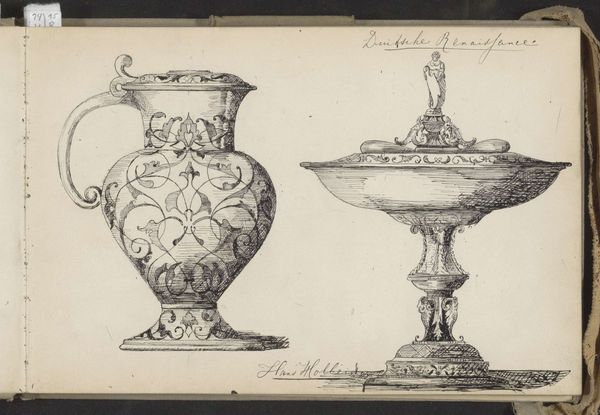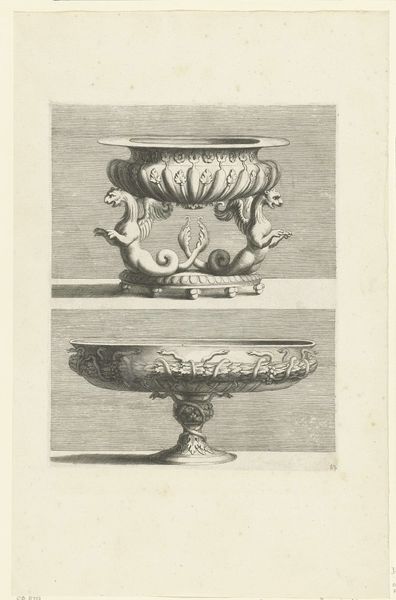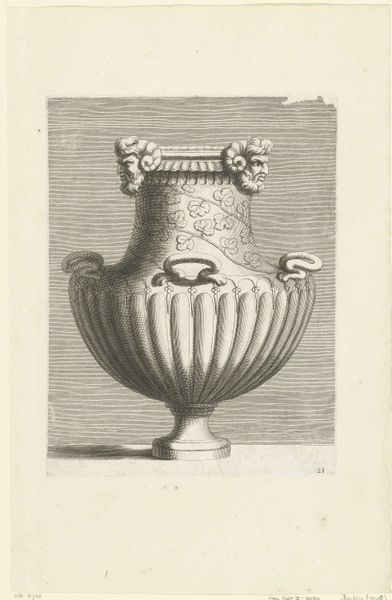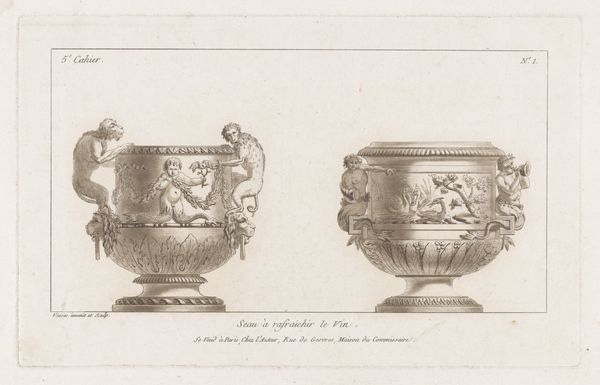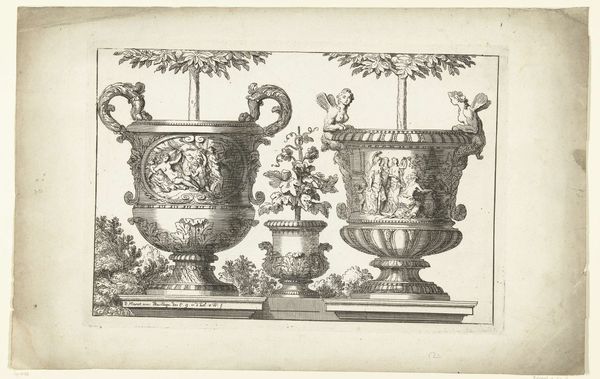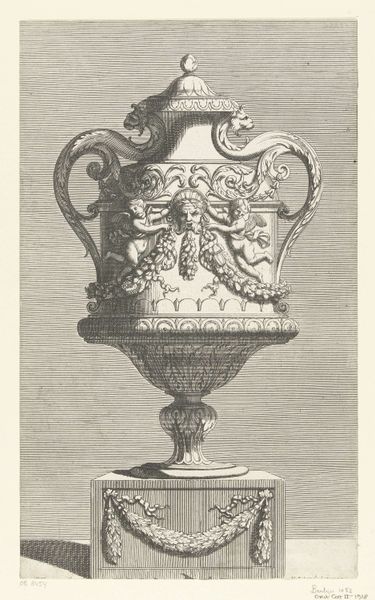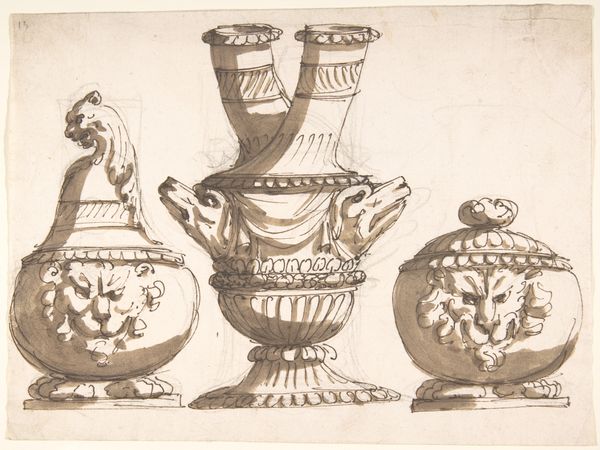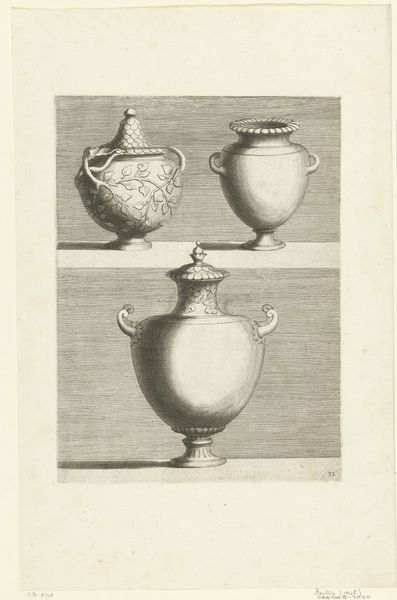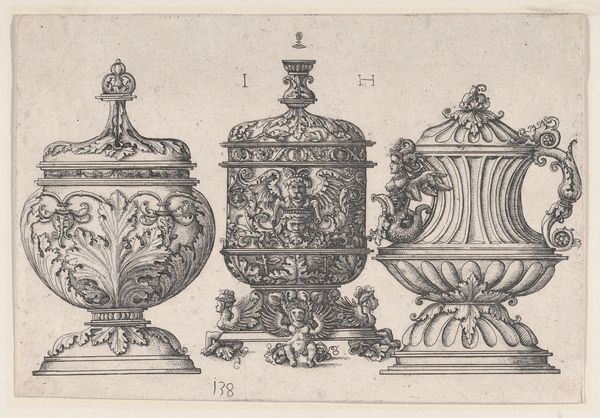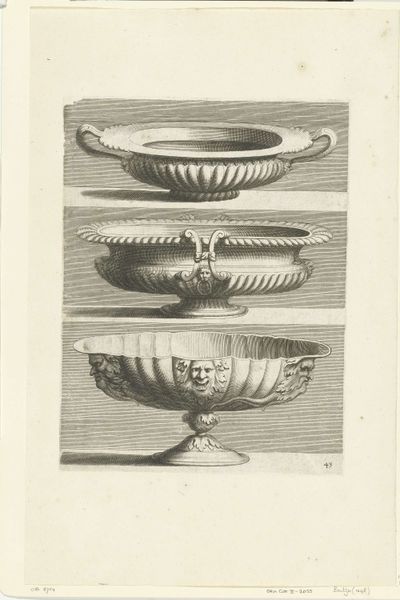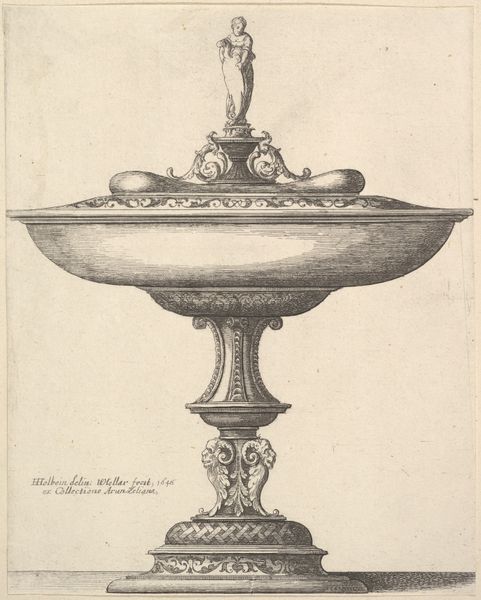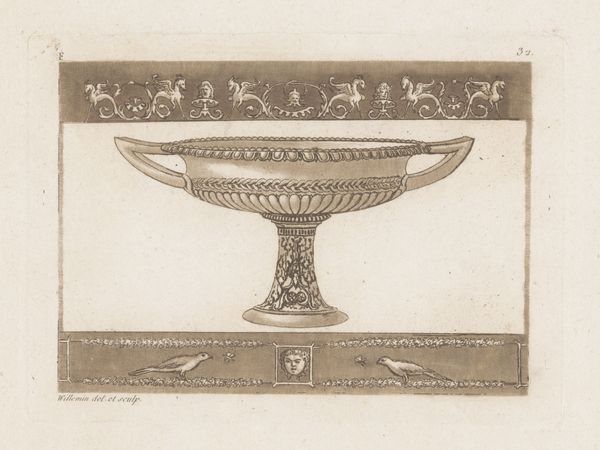
drawing, print, engraving
#
drawing
#
neoclacissism
# print
#
old engraving style
#
geometric
#
engraving
Dimensions: height 182 mm, width 243 mm
Copyright: Rijks Museum: Open Domain
Curator: Here we have an engraving dating back to 1789, titled "Oliestel," created by de Saint-Morien, and now residing here at the Rijksmuseum. Editor: Oh, immediately I'm struck by the utter symmetry. Two matching pitchers, facing each other almost in conversation, flanking this intriguing central spire... it's all so meticulously balanced, yet also kind of sterile? Curator: That rigid symmetry speaks directly to the Neoclassical movement, doesn't it? It's all about order, rationality, harking back to ancient Greek and Roman ideals of beauty. We see it echoed everywhere here: in the precise detailing, the restrained ornamentation, and the very concept of a matched pair. Editor: Precisely! And those pitchers, perched upon a pedestal that resembles something unearthed from Pompeii... The claw feet are almost unsettling, like vestiges of some pagan past fighting against the rising tide of Enlightenment rationality. Tell me more about this object—is it utilitarian or ornamental, or some blend of the two? Curator: Functionally, "Oliestel" translates to "oil stand," or oil cruets stand, implying a tabletop set. So both practical and very much about displaying a certain… sophistication. It represents a lifestyle— a dinner scene perhaps illuminated by candlelight, fine oils elegantly presented for discerning palates. Beyond function, consider oil itself and its symbolism—traditionally used to anoint monarchs, in spiritual ceremonies; is de Saint-Morien quietly commenting on a similar elevation of this scene? Editor: That's fascinating! The mirroring in the forms really reinforces the elevated ritual then: light reflected, flavor doubled, a certain abundance underscored in an era edging towards revolution. It gives me the impression the image of vessels in an alchemical lab — of elements meticulously measured, a certain magic brewing behind a veneer of controlled presentation. I see in this oil stand a yearning not just for refinement, but for order and a type of control against an era in total flux. Curator: Exactly! Now looking back, it occurs to me there's an underlying anxiety here – all that perfection trying so hard. What do you feel now, as we close out, regarding our pairing of perspectives on de Saint-Morien’s world from so long ago? Editor: I’d say that even something ostensibly simple can mirror the anxieties of an entire era, if you look closely enough. Even an oil stand becomes a symbolic arena for the tension between tradition and upheaval.
Comments
No comments
Be the first to comment and join the conversation on the ultimate creative platform.
